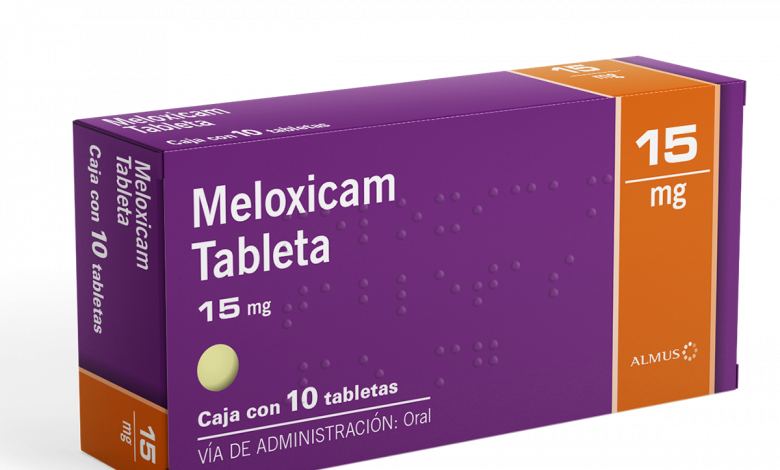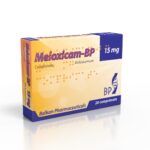Is Meloxicam Addictive?

The word “addiction” is derived from a Latin term for “enslaved by” or “bound to.” Anyone who has struggled to overcome an addiction—or has tried to help someone else to do so—understands why.
Addiction exerts a long and powerful influence on the brain that manifests in three distinct ways: craving for the object of addiction, loss of control over its use, and continuing involvement with it despite adverse consequences.
An addictive drug is one that you cannot stop taking once you have started. Addiction involves craving for something intensely, loss of control over its use, and continuing involvement with it despite adverse consequences. Addiction changes the brain, first by subverting the way it registers pleasure and then by corrupting other normal drives such as learning and motivation. Although breaking an addiction is tough, it can be done.
What is meloxicam?
Meloxicam is a prescription drug. It comes in three forms: an oral tablet, an injection, and an oral capsule. Meloxicam oral tablet is available as the brand-name drug Mobic.
Meloxicam oral tablet is also available as a generic drug. Generic drugs usually cost less than the brand-name version. In some cases, they may not be available in all strengths or forms as the brand-name drug.
Why it’s used
Meloxicam decreases inflammation and pain. It’s approved to treat:
• osteoarthritis
• rheumatoid arthritis
• juvenile idiopathic arthritis (JIA) in children ages 2 years and older.
How it works
Meloxicam belongs to a class of drugs called nonsteroidal anti-inflammatory drugs (NSAIDs). NSAIDs help reduce pain, inflammation, and fever.
It isn’t known how this medication works to decrease pain. It may help reduce swelling by lowering levels of prostaglandin, a hormone-like substance that usually causes inflammation.
How should meloxicam be used?
Meloxicam comes as a tablet and suspension (liquid) to take by mouth. It is usually taken once a day with or without food. Take meloxicam at the same time every day.
Typical dosing for meloxicam (Mobic)
Tablets
Rheumatoid arthritis and osteoarthritis: Take 7.5 mg to 15 mg by mouth once a day. Do not take more than 15 mg a day.
Juvenile rheumatoid arthritis: Take 7.5 mg by mouth once a day. Do not take more than 7.5 mg a day.
Capsules
Rheumatoid arthritis and osteoarthritis: Take 5 mg to 10 mg by mouth once a day. Do not take more than 10 mg a day.
Follow the directions on your prescription label carefully, and ask your doctor or pharmacist to explain any part you do not understand. Take meloxicam exactly as directed. Do not take more or less of it or take it more often than prescribed by your doctor.
Shake the suspension well before each use to mix the medication evenly. The maximum recommended daily oral dose of meloxicam is 15 mg. Meloxicam may be taken without regard to the timing of meals.
Is meloxicam habit forming?
No, meloxicam is not an addictive drug and does not cause a high, as a result, you can stop taking it if you choose without the risk of withdrawal or craving. This is because meloxicam does not affect the systems normally associated with addiction potential. Meloxicam works by blocking the effect of natural chemicals called cyclo-oxygenase (COX) enzymes. These enzymes help to make other chemicals in the body, called prostaglandins. Some prostaglandins are produced at sites of injury or damage and cause pain and inflammation.
Stopping the use of meloxicam is unlikely to cause withdrawal symptoms that present with addictive substances, and use can be stopped abruptly without risk. However, meloxicam may increase your risk of developing a blood clot, heart attack, or stroke, which can be fatal. Your risk may be higher if you’re taking it long-term, at high doses, or if you already have heart problems or risk factors for heart disease, such as high blood pressure.
Is meloxicam safe to take everyday?
Yes, meloxicam is safe to take daily, and it’s typically longer-lasting than other over-the-counter medications like ibuprofen. However, serious side effects such as allergic reactions, nausea, or vomiting may occur.
The more common side effects that can occur with meloxicam include:
• abdominal pain
• diarrhea
• indigestion or heartburn
• nausea
• dizziness
• headache
• itching or rash
If these effects are mild, they may go away within a few days or a couple of weeks. If they’re more severe or don’t go away, talk to your doctor or pharmacist.
Serious side effects
Call your doctor right away if you have serious side effects. Call 911 if your symptoms feel life-threatening or if you think you’re having a medical emergency. Serious side effects and their symptoms can include the following:
• Heart attack. Symptoms can include:
o chest pain or discomfort
o trouble breathing
o cold sweat
o pain or discomfort in one or both arms, your back, shoulders, neck, jaw, or area above your belly button
• Stroke. Symptoms can include:
o numbness or weakness of your face, arm, or leg on one side of your body
o sudden confusion
o trouble speaking or understanding speech
o vision problems in one or both eyes
o trouble walking or loss of balance or coordination
o dizziness
o severe headache with no other cause
• Stomach and intestinal problems, such as bleeding, ulcers, or tearing. Symptoms can include:
o severe stomach pain
o vomiting blood
o bloody stools
o black, sticky stools
• Liver damage. Symptoms can include:
o dark urine or pale stools
o nausea
o vomiting
o not wanting to eat
o pain in your stomach area
o yellowing of your skin or whites of your eyes
• Increased blood pressure: Symptoms of extreme high blood pressure can include:
o dull headache
o dizzy spells
o nosebleeds
• Water retention or swelling. Symptoms can include:
o rapid weight gain
o swelling in your hands, ankles, or feet
• Skin problems, such as blistering, peeling, or red skin rash
• Kidney damage. Symptoms can include:
o changes in how much or how often you urinate
o pain with urination
o Decreased red blood cells (anemia)
Gastrointestinal Side Effects
Abdominal pain, diarrhea, upset stomach, and nausea occur very often with this drug. Pain, vomiting, and diarrhea may occur more often in children than adults. Sometimes these side effects can cause more serious stomach problems.





